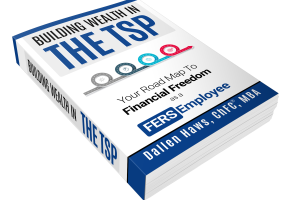As a federal employee, one of the most important financial decisions you will make is how to allocate your Thrift Savings Plan (TSP) investments. With so many options and strategies available, it’s natural to wonder: What is the best TSP allocation? While I’d love to provide a one-size-fits-all answer, the truth is that the best allocation depends on your individual goals, risk tolerance, and retirement timeline. That said, let’s break down the key factors to consider when determining your ideal TSP investment strategy.
Understanding the TSP Funds
The TSP offers five core funds and a series of Lifecycle (L) Funds that provide diversified investment options:
G Fund (Government Securities Investment Fund) – A stable, low-risk fund that protects your principal but has lower returns.
F Fund (Fixed Income Index Investment Fund) – A bond fund that provides moderate returns with some risk exposure.
C Fund (Common Stock Index Investment Fund) – A stock fund that tracks the S&P 500, offering higher growth potential.
S Fund (Small Capitalization Stock Index Investment Fund) – A fund that tracks small to mid-sized U.S. companies, offering higher volatility and growth potential.
I Fund (International Stock Index Investment Fund) – A fund investing in international stocks, providing global diversification but also increased risk.
L Funds (Lifecycle Funds) – A mix of the above funds that automatically adjust asset allocation based on your target retirement date.
Conservative vs Aggressive
When it comes to the TSP, the G and F funds are known for their conservative nature, offering stability with minimal fluctuations in value. In contrast, the C, S, and I funds are considered more aggressive, carrying greater potential for growth but also higher volatility.
Why There Is No Single Best Allocation
Investing is not just about maximizing returns; it’s also about managing risk in alignment with your financial goals. If maximizing returns was the sole objective, everyone would put 100% in the C Fund or even take on more aggressive investments outside the TSP. However, risk and volatility are crucial factors. Federal employees often value stability and security, so a balanced approach is necessary.
Additionally, your investment strategy should align with your time horizon. A younger employee with 30+ years until retirement can afford more risk, whereas someone retiring in five years might need a more conservative approach.
Good Rules of Thumb When Investing
The Bucket Strategy – This strategy divides retirement investments into different timeframes, such as cash, mid-term, and long-term buckets. Each bucket is designed to meet specific financial needs: the cash bucket covers immediate income needs, the mid-term bucket provides stability, and the long-term bucket focuses on growth. It’s good to have at least 2-4 years worth of needed withdrawals in the cash bucket, the next 2-4 years of withdrawals in the mid-term bucket, and any money that you’d need after that can go into the long-term bucket. In terms of the TSP, this could mean having 8 years worth of withdrawals invested in the G and F funds while having the rest of your money invested in the C, S, and I funds. For more information on the bucket strategy, check out this article.
4% Rule – This rule provides a guideline for sustainable withdrawals from retirement savings. It suggests withdrawing 4% of your total balance annually in the first year of retirement and adjusting for inflation in subsequent years. This rule aims to provide a stable income while minimizing the risk of depleting savings. Typically applied to a balanced portfolio of stocks and bonds, it helps maintain a conservative, yet potentially sustainable, withdrawal strategy. For more information on the 4% rule and the bucket strategy, check out this article.
Example:
John is retiring this year with approximately $500,000 in his TSP, currently invested entirely in the C Fund. As retirement nears, he grows more concerned about market fluctuations and the potential loss of his hard-earned savings. Wanting a strategy that balances stability with growth, he researches his options and decides to apply both the 4% rule and the bucket strategy to his TSP.
To ensure he has enough readily available funds for withdrawals without worrying about market volatility, John wants about 7–8 years’ worth of withdrawals in more conservative investments, such as the G and F Funds. Since he plans to withdraw 4% annually, he estimates that 30–40% of his TSP should be in these lower-risk funds.
For long-term growth, John wants to keep a significant portion of his portfolio in the stock market. To diversify, he decides to allocate part of his TSP to the S and I Funds. After weighing all factors, he settles on the following allocation:
40% C Fund
15% S Fund
5% I Fund
20% G Fund
20% F Fund
This results in a 60% stock and 40% bond allocation, balancing risk and growth potential for his retirement years.
⚠ Disclaimer: This example is for illustrative purposes only and may not be suitable for your specific financial situation. Consider consulting a financial professional before making investment decisions.
Other Key Considerations
Traditional vs. Roth TSP
Another decision you control is whether to contribute to the Traditional or Roth TSP:
Traditional TSP – Contributions are pre-tax, reducing your taxable income now but requiring taxes upon withdrawal.
Roth TSP – Contributions are post-tax, meaning withdrawals (including growth) are tax-free in retirement.
If you’re early in your career and expect to be in a higher tax bracket later, Roth may be the better choice. If you are nearing retirement and are in a high tax bracket, Traditional might provide more immediate tax savings.
Rebalancing Your TSP
Markets fluctuate, so periodically rebalancing your TSP ensures that your allocation remains aligned with your goals. The TSP does not automatically rebalance your investments unless you are in an L Fund, so checking and adjusting your allocations annually is a good practice.
Final Thoughts
The best TSP investment allocation is the one that aligns with your financial goals, risk tolerance, and retirement timeline. Federal employees have an incredible opportunity to build wealth through the TSP, but it requires strategic planning and thoughtful decision-making. Whether you choose to handle your TSP investments yourself or seek professional guidance, the key is to stay informed, be consistent, and adjust as needed.
Your future self will thank you for making smart investment choices today!


